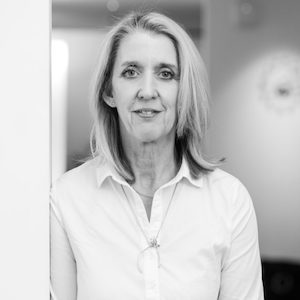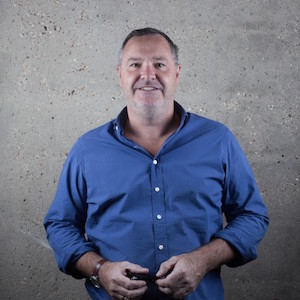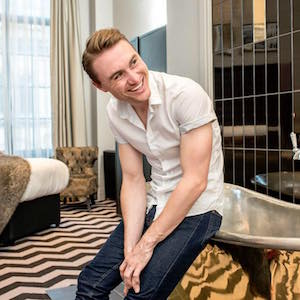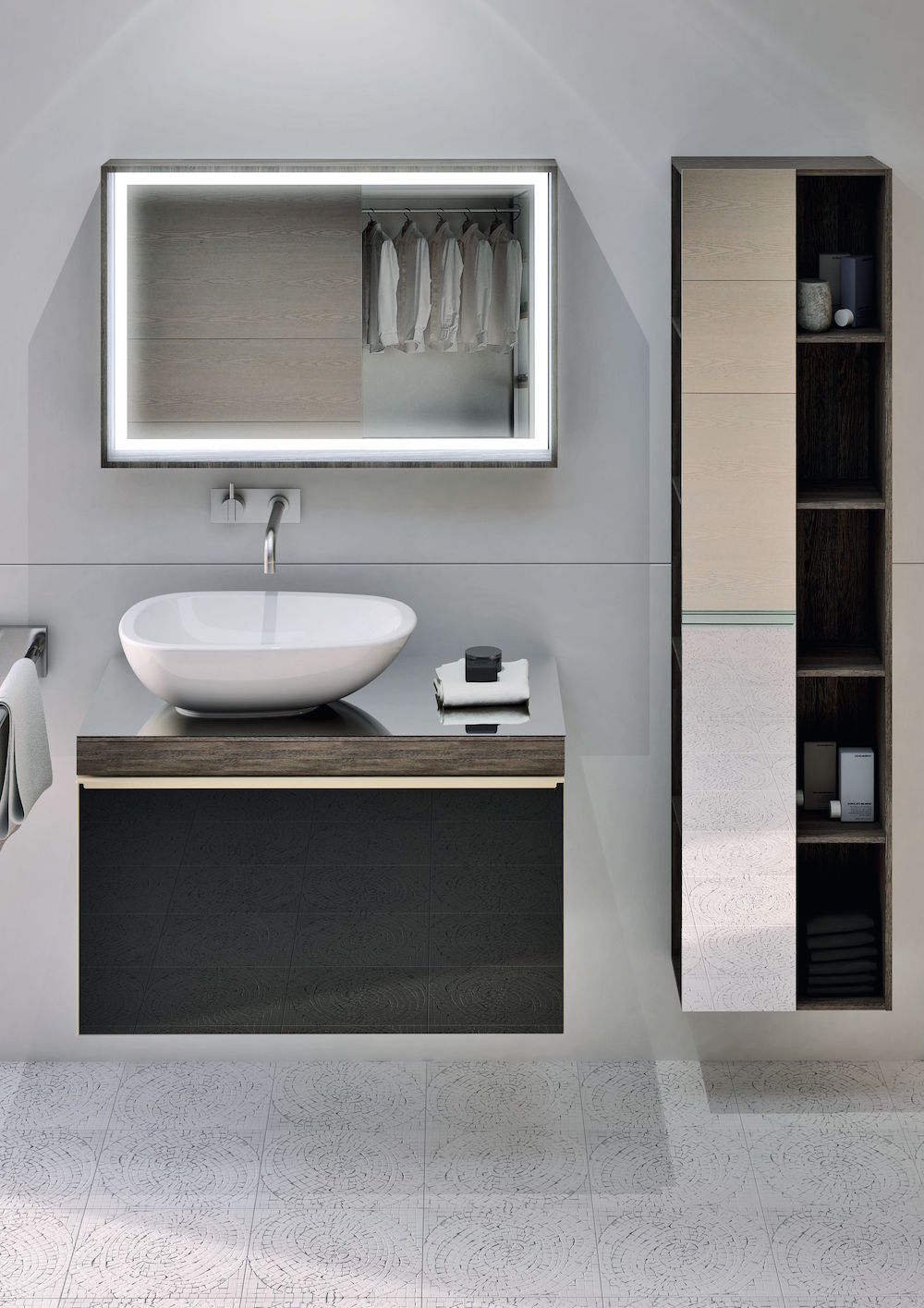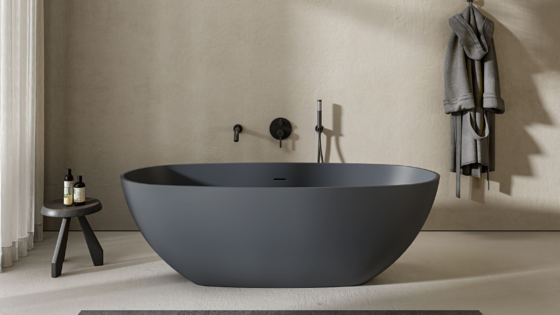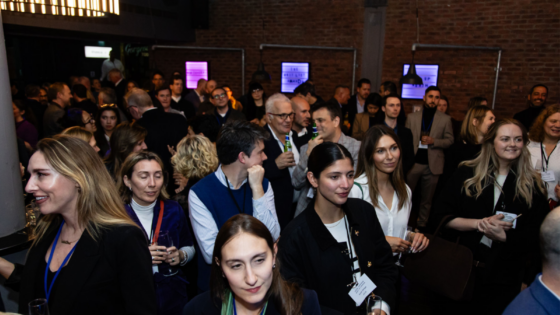To cut through the noise and with the aim to identify meaningful solutions, Hotel Designs’ next virtual roundtable, in association with Geberit, tackles the hygiene debate to ultimately understand tomorrow’s perception of clean…

On the panel:
- David Mason, Head of Hospitality, Scott Brownrigg
- Fiona Thompson, Principal, Richmond International
- Hannah Willock, Interior Designer, Conran + Partners
- James Dilley, Director, Jestico + Whiles
- Richard Snow, Senior Interior Designer, RPW Design
- Tamara Ayorech Okello, Head of Interior Design, Battersea Powerstation
- Hamish Kilburn, Editor, Hotel Designs
- Lynne Clapham Carter, Specifications Manager, Geberit
Hamish Kilburn: I really feel for suppliers and manufacturers during this time, during the Covid-19 crisis, because it is so difficult to predict what consumers will demand moving forward and therefore designing products that are suitable for tomorrow’s guests who are checking in is such a challenge. But I want to know, is hygiene becoming a selling point in itself and is this driving innovation at Geberit HQ?
Lynne Clapham-Carter: Hygiene has always been a driver in bathroom manufacturing and Geberit has always been at the forefront of innovative tech – both in terms of hygiene and water-saving solutions – for the last 150 years.
What I am finding is that technology has been in place for a while and now people are beginning to discover this, which is driving demand. Hygiene and touch-free tech has long been standard for many commercial spaces. Now, as a company, we are seeing this being pushed into the residential space.
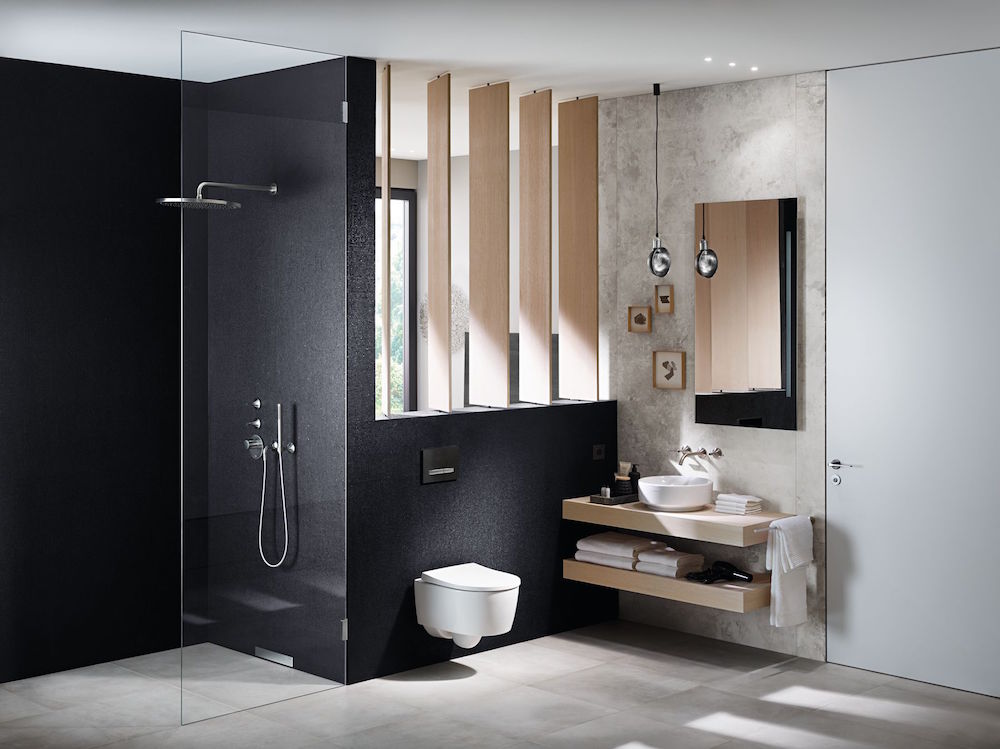
Image credit: Geberit
HK: Hygiene has been the fundamental topic in every conversation recently – but our industry is, by its very nature, already setting high standards when it comes to clean and safe spaces. How will hospitality reassure the post-corona consumer without making it feel sterile?
James Dilley: It’s partly perception. I think, pre-pandemic, we were seeing a lot of the non-touch tech evolving in any case. The way check-in areas have changed in recent years is a prime example of this. In theory, and I don’t believe hygiene was the driver for this, we can go through a hotel experience without having to touch anyone or anything. The counterpoint of that is in the luxury market, where there has been a strong demand for real human contact. People will pay more for a human to deliver that service and they [luxury hotels] will have the challenge to deliver that in a post-pandemic world.
HK: When it comes to lifestyle and luxury, does the perception differ?
Hannah Willock: Everyone is so well travelled now that, I believe, it spans across both – you want the hotel to feel like a home-away-from-home. We’ve had a lot of conversations recently about injecting technology in a meaningful way so that the hospitality experience is accessible to everyone.
“Bathrooms are semi-blessed for appearing to be cleaner than clean.” – David Mason, Head of Hospitality, Scott Brownrigg.
HK: Now more than ever there is that bridge between design and service. Are you then, as designers, more involved in conversations regarding service at an earlier stage of the design project?
David Mason: As designers, we have always been part of that process considering that we are creating experiences. So, I think we are always working with those touchpoints in mind. Bathrooms are semi-blessed for appearing to be cleaner than clean – not like, for example, soft furnishings or fabrics. If we are going to go back to this very tech-driven approach to design to move people around the space, we have to then remember to include more touchpoints to make up for the human element and interaction being lost.
“You don’t therefore want to make it feel clinical.” – Fiona Thompson, Principal, Richmond International.
- Image credit: Geberit
- Image credit: Geberit
HK: What are the pitfalls to avoid when looking at tomorrow’s perception of clean?
Fiona Thompson: When you are in a hotel there is an assumption that there is a level of clean. And I know that the big hotel group are collaborating to maximize this, but from a human level there is already a strong assumption that hotels – in general – are clean spaces and that, especially in the bathroom, that there is a level of cleanliness. You don’t therefore want to make it feel clinical. It’s now about creating that balance.
HK: Tamara, you are working on a very exciting development in London. Do the conversations differ between hospitality and residential?
Tamara Ayorech Okello: I think we are all striving for an enhancement to what we already have. A lot of our purchasers, post-covid especially, are putting more emphasis into the bathroom being a space of tranquility. In residential, it’s about having loyal and trustworthy suppliers who can ensure that the spaces look amazing but also out-perform others on the market. In terms of client engagement, the most common thing we are seeing being demanded in the bathroom is quality fixtures and fittings. That is not going to change, it’s only going to progress – and it’s something people are more inclined to invest in.
“At first, we see these high-tech products emerge in suites but when demand surges the cost of these items will come down and they will become almost as standardized part of the bathroom design.” – Richard Snow, Senior Designer, RPW Design.
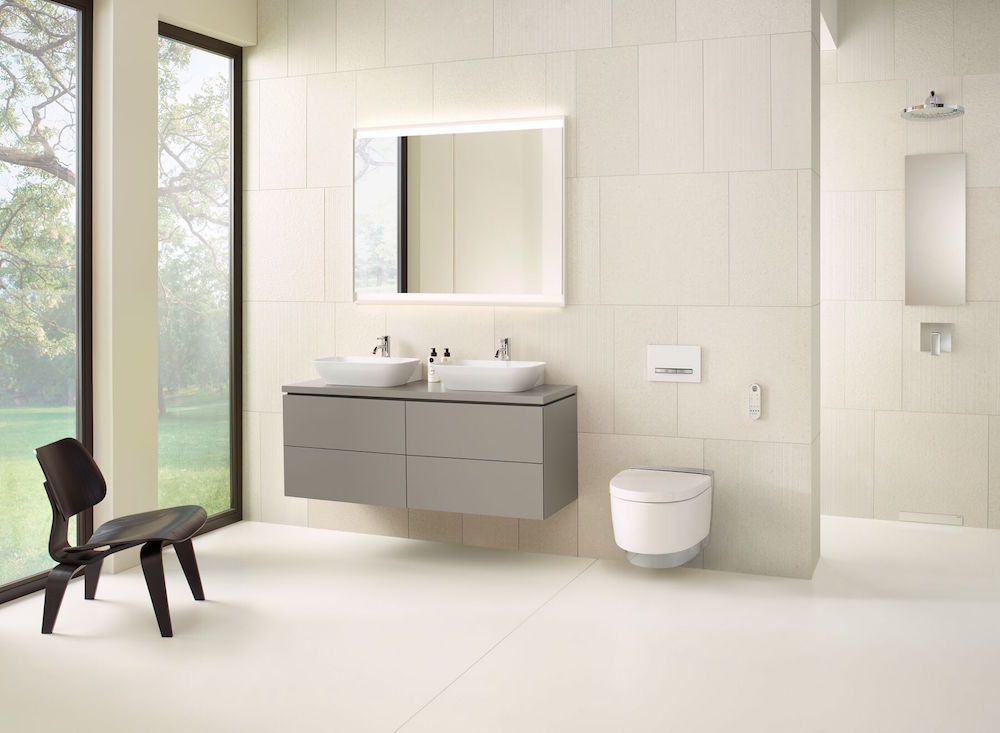
Image credit: Geberit
HK: One of the takeaways from a recent Hotel Designs LIVE event we hosted was that wellness would be injected in all areas of the hotel moving forward. That suggests to me, as you were saying Tamara, that clients and consumers alike will put more emphasis on the bathroom. How are these spaces becoming more than just practical spaces?
Richard Snow: New technology, such as the shower toilet, is starting to become an interesting conversation. At first, we see these high-tech products emerge in suites but when demand surges the cost of these items will come down and they will become almost as standardised part of the bathroom design. We’ve had rooms in the past where we have designed them as a spa room and I think it depends of budget, quality and style. It’s exciting that more products are becoming available that make these rooms more of an experience. For me, it will be interesting to see how that technology from the five-star level drips down into more accessibly priced hotel experiences.
HK: Do you think that spa experience will become standardised?
FT: I’m not sure if ‘spa experience’ is the right phrase, but health and wellness is such a large factor at the moment for all sectors in the hospitality arena. Covid-19 has changed such a lot that I believe the bedroom and bathroom will just become such an intimate space which allows for the wellness experience to be elevated.
HK: In recent times, lifestyle brands have not been afraid to target themselves to a particular, often narrow, demographic. In lifestyle specifically, what are the hygiene demands from modern travellers?
JD: The W Edinburgh is highly tech based and without touch, however, when it opens, the guest will have a choice. The challenge for this hotel is that there are no barriers between the city and the hotel – it is an extension of the neighbourhood and there is no perception of security or threshold for that matter. And actually, the most public of spaces in the hotel are right at the top of building in order to utilise the view across the city. The challenge will be how to control and manage people from outside. There are a lot of challenges but hotels’ currency is hygiene and sanitation. Now I am just seeing that businesses are just packaging the messaging in different ways.
LCC: A few years back, Geberit published a white paper that looked at the five senses in order to create a safe haven within a bathroom or guest suite to actually look at it in a holistic way. From our side, it was about understanding the challenges and how they get assaulted and creating a space where you feel space without it feeling clinical. As a manufacturer, our job is to address the acoustics, the smells and touches (all those tactile things) and how they impact in product.
“When we eventually do come out of the Covid-19 pandemic, social contact will be mayhem in such a beautiful way.” – James Dilley, Director, Jestico + Whiles.
HK: What would you say are the main demands you are hearing from designers and architects at the moment?
LCC: Swapping things from touch to touchless. That would be the biggest enquiry at the moment, and that goes for both residential and hospitality.
FT: Particularly in public spaces.
RS: There is a different perception in public and private areas. I think there is an element of guests wanting to be in control in their own private spaces.
JD: I am a great believer in that for every action there is a reaction. And for me, there has been a lack of social contact recently. When we eventually do come out of the Covid-19 pandemic, social contact will be mayhem in such a beautiful way. I also think this will be the same with hygiene and sanitation. We have been closeted and constricted for two years and I think consumers will demand for sharing plates.
DM: With the vaccine as well, we are getting a positive approach that we will come out of this and it is helping us move forward.
JD: The irony is that by making the hospitality experience touch-free is to use your mobile phones, and mobile phones have got to be the most unsanitary objects in our lives. The fact that we are using them to combat germs just does not make any sense.
HK: Will shower toilets become more popular in the west?
FT: I think it is happening. In more and more of the properties we are working on it has become an option. I think that’s partly because it is an added facility and sometimes it is a space saving answer to the brief to remove the bidet. There is more of a challenge to introduce these in public areas.
RS: When you are in Japan, they are everywhere but certainly here it will take time for the shower toilet to be embraced.
TAO: In residential, I can see the shower toilet being embraced but I am not sure how that would jump into the hospitality public areas.
LCC: One of the things I find interesting in this conversation around shower toilets is that our society has become a lot more multi-cultural now and participially in the hotel industry people are travelling and in Japan, as an example, more than 50 per cent of people have shower toilets in their homes. So, when they come to a hotel and are paying large sums of money for a night they will expect the same, at least, if not better than what they have in their hotel. Hotels are using refurbishments as an opportunity to install these products.
HW: In our projects in the Asia/Pacific region, we are speaking with suppliers to ensure that the shower toilets we specify are simple and easy to use. Also, in addition to the obvious features of these products, clients also buy into the other benefits such as the anti-bacteria cleaning features.
FT: if you can simplify the controls, then people will use it.
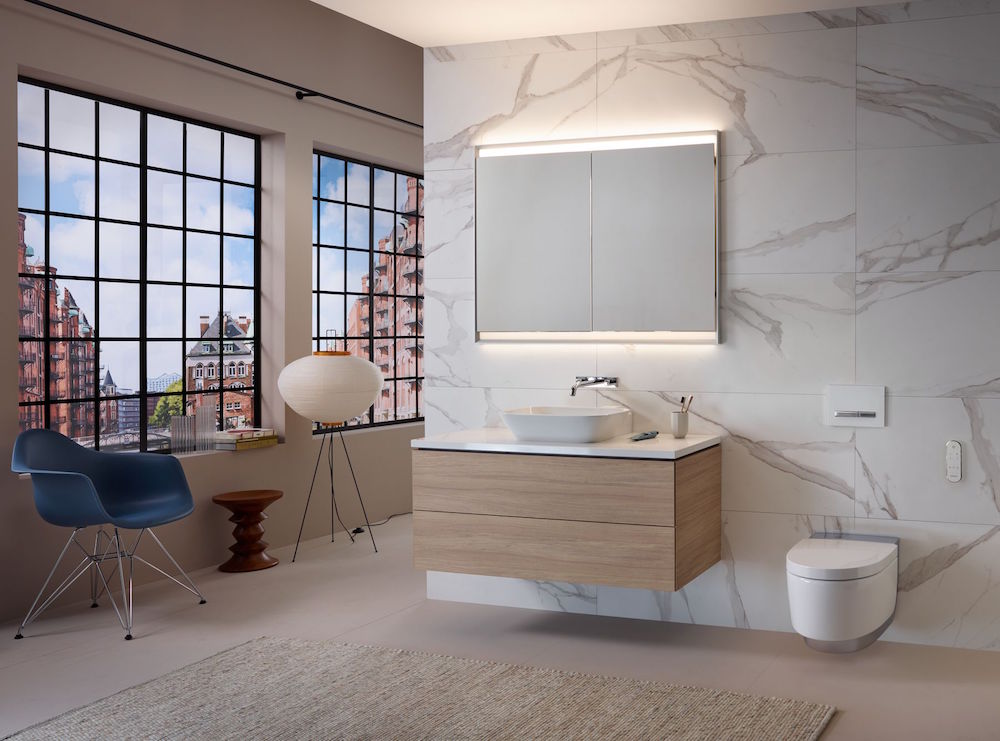
Image credit: Geberit
HK: Can we do better than sensors when it comes to touchless tech?
HW: We are seeing a lot of app-based technology especially when it comes to showering. In a residential setting that is becoming really popular but in a hotel that throws in a lot of challenges, it is possible and if the conversations are had at the very start of the project it can be integrated into projects successfully . I think we will begin to see more and more adoption and integration of this in hospitality over time. What is key is ensuring the success is that if it’s used its user friendly for all guests across the board.
DM: I worked on the Eccleston Square hotel, which stored guests’ information so that the temperate of the room and service requirements could be replicated when the guest returned. That was 10-12 years ago so the technology is there but it is about streamlining the process. It is at the end of day a balance.
I think it’s also a generational thing. What works for one demographic won’t necessarily work for others. We need the choice, tech is advancing all the time, who knows what it will look like in five years’ time.
RS: I think technology will slowly drip in in order for the change not to be so dramatic and sudden. Given what happened a decade ago, when tech flooded a lot of hospitality experiences, designers are very aware to make gradual steps forward that are considered in order to enhance the overall guest experience.
LCC: There is the perception that technology and wellness do not fit well together but in actually fact the opposite can be true. There are a lot of things about technology that can help wellness. In the early days, we used motion sensing in touchless tech but now it is proximity sensors which are far more accurate. There are features in flush plates where as you walk towards them an orientation light glows. This is opposed to having all the lights on if you wake up in the middle of the night.
JD: What we are saying is that tech is filling the void of what good service used to be. If you checked into a good hotel 20 years ago, the General Manager or the concierge would recognise you and to an extent recognise your demands and preferences. They would have this knowledge – it’s trivia but it recognises care and consideration. Somehow those symbols of luxury are being replaced with technology and I find it quite a hallow gesture compared to the human touch that we used to have. That’s why I believe the human touch will never be replaced in the premium hotels.
HK: For me, tomorrow’s bathrooms will play on the five senses – can we inject sound/smell/touch into the bathroom experience without being gimmicky?
FT: As long as it isn’t cliché. Great lighting is a given but some of these experiential showers deter from a great experience. Anything that addresses the senses has to be thoughtful and meaningful.
Geberit is one of our Recommended Suppliers and regularly features in our Supplier News section of the website. If you are interested in becoming one of our recommended suppliers, please email Katy Phillips.
Main image credit: Geberit


